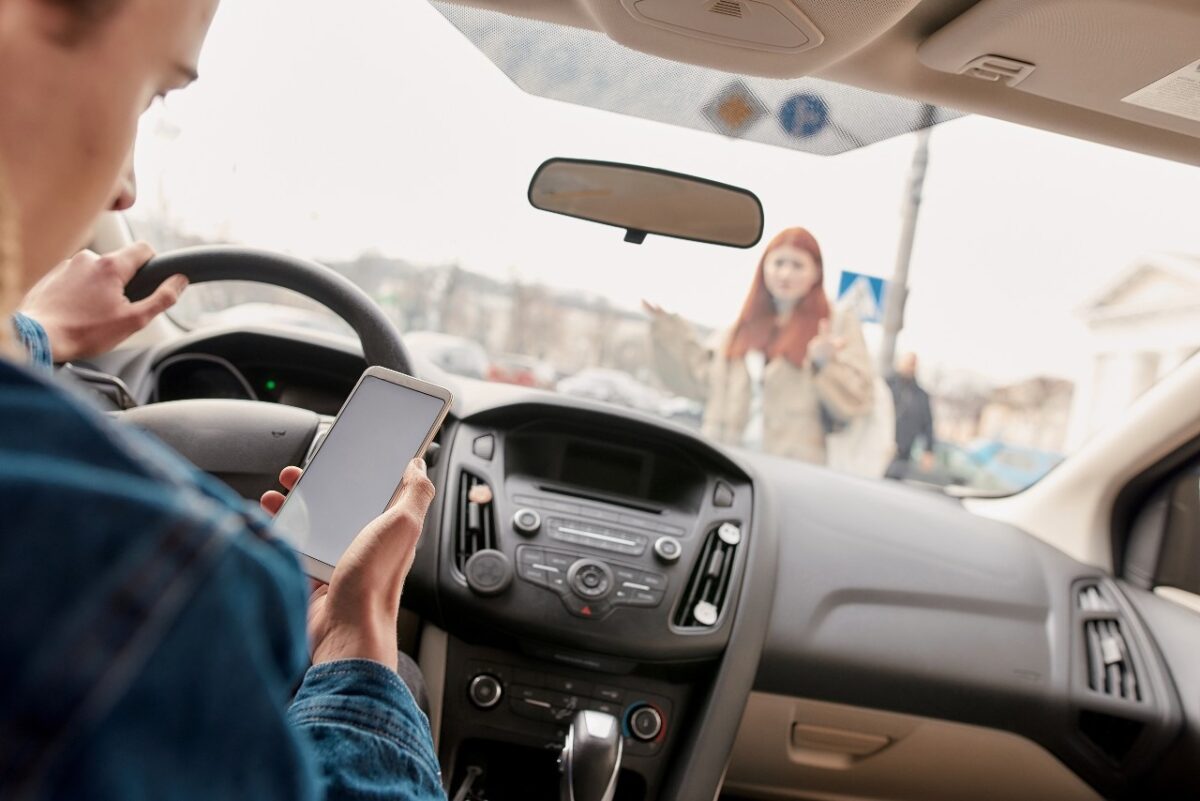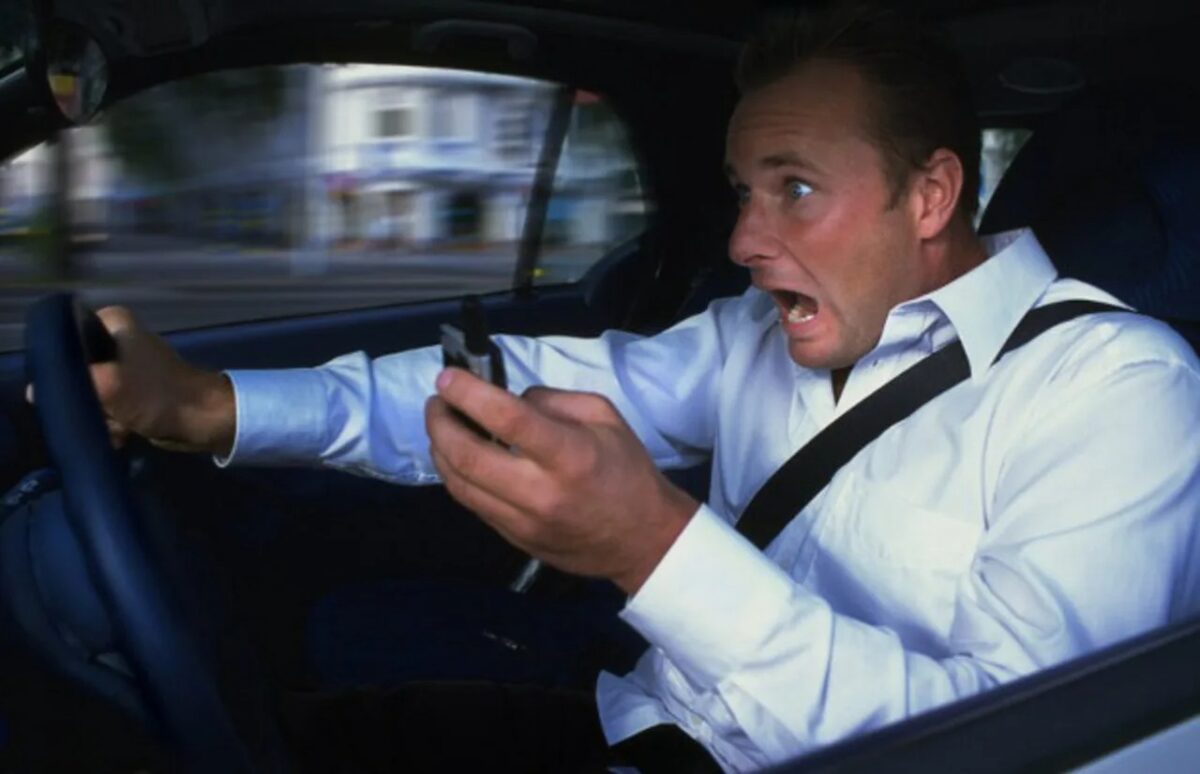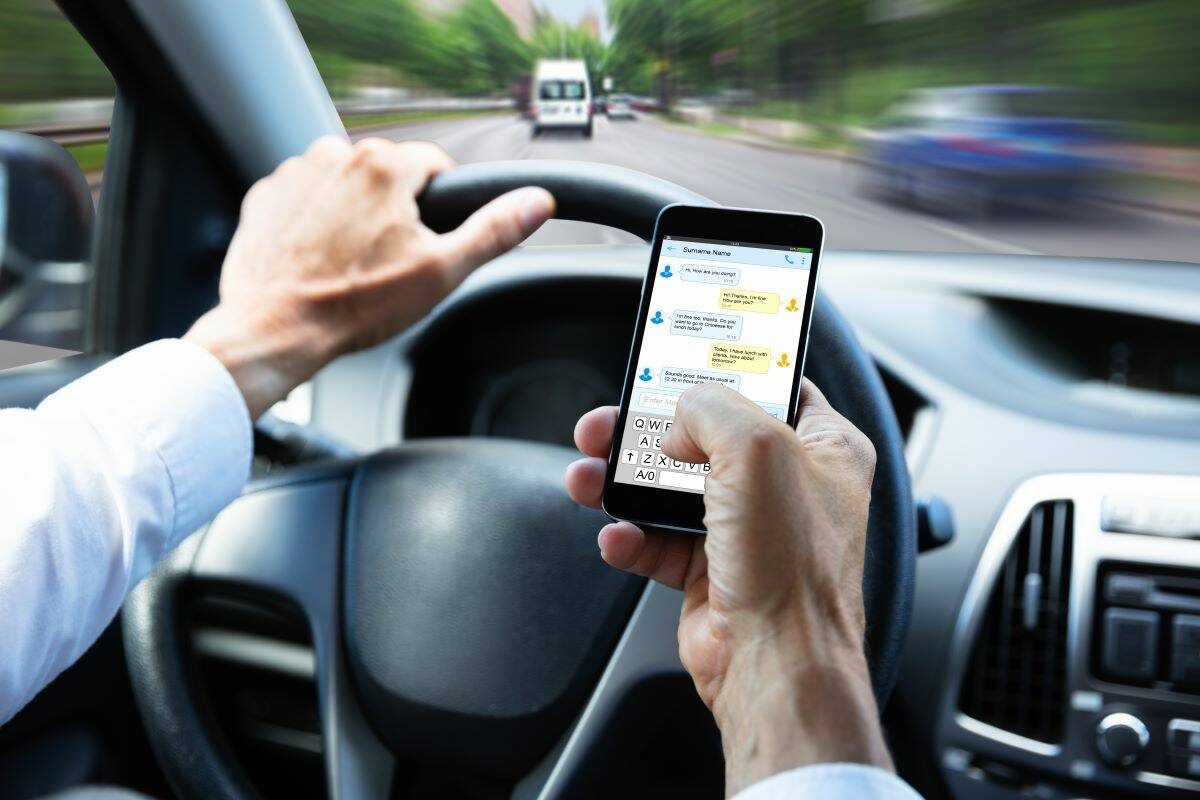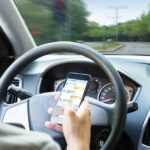Texting and driving is a dangerous habit that has become increasingly common in recent years.
With the rise of smartphones and other mobile devices, people are more connected than ever before.
Unfortunately, this also means that more people are using their phones while they are behind the wheel.
Texting and driving is especially dangerous since it means that the driver must look at their device long enough to take their eyes off the road, their minds off driving, and even their hands off the steering wheel.
Even a momentary distraction can have profound consequences, including accidents and fatalities.
Post Contents
- 1 Key Statistics
- 2 Texting While Driving Accidents Statistics 2024: Accidents and Fatalities Due to Texting and Driving
- 2.1 1. There are an Average of 400 Deaths Each Year in The United States Due to Texting and Driving.
- 2.2 2. In 2019. 430 People Died in Fatal Automobile Accidents Caused from Texting While Driving.
- 2.3 3. Texting While Driving Automobile Accidents that Cause the Death of Another Person May be Charged with Murder.
- 2.4 4. 94% of American Drivers Support a Ban on Texting While Driving.
- 2.5 5. It’s Alarming to Learn that Around 1.6 Million Auto Accidents Reported per Year Are Due to Using a Cell Phone While Driving.
- 2.6 6. 21% of Teenagers Who Have Been Involved in A Fatal Car Accident Were Distracted by Their Mobile Phone.
- 3 Texting While Driving Accidents Statistics Teenagers Vs Adults
- 3.1 7. Teenaged Drivers Are Four Times More Apt to Be Involved in Texting While Driving Car Crashes than Adults.
- 3.2 8. In 2020, Mobile Phone Usage Was Discovered to Be Highest Among 16- to 24-Year-Olds.
- 3.3 9. 39% of American High School Students Admitted to Texting or Emailing While Driving Within the Past 30 Days.
- 3.4 10. In 2020, 729 Drivers Between 25 and 34 Years Old Were Involved in Fatal Auto Crashes.
- 4 Texting While Driving Drunk Statistics
- 4.1 11. The NHTSA Says that It’s Six Times More Dangerous to Text and Drive While Drunk.
- 4.2 12. Distracted Driving Causes a 35% Reaction Time Decline Compared to 12% Among Drunk Drivers.
- 4.3 13. Inexperienced Drivers Are Not Allowed to Use Cellphones in 38 States for A Specified Period.
- 4.4 14. There Are Laws Against Texting While Driving in 48 States and The District of Columbia (DC).
- 4.5 15. Car Insurance Rates Have and Will Go up Due to Texting and Driving Accident Claims and Tickets.
- 5 FAQs
- 5.1 How Many People Die from Texting and Driving?
- 5.2 How Does Texting and Driving Impact Society?
- 5.3 What are the Laws and Regulations on Texting and Driving?
- 5.4 How Can You Prevent Texting and Driving?
- 5.5 What Technology Solutions to Stop Texting and Driving are Available?
- 5.6 What Are the Four Types of Distracted Driving?
- 6 Conclusion
- 7 Sources
Key Statistics
- There are an average of 400 deaths each year in the United States due to texting and driving.
- In 2019, 430 people died in fatal automobile accidents cause from texting while driving.
- Texting while driving automobile accidents that cause the death of another person may be charged with murder.
- 94% of American drivers support a banning on texting while driving.
- It’s alarming to learn that around 1.6 million auto accidents reported per year are due to using a cell phone while driving.
- 21% of teenagers who have been involved in a fatal car accident were distracted by their mobile phone.
- Teenaged drivers are four times more apt to be involved in texting while driving car crashes than adults.
- In 2020, mobile phone usage was discovered to be highest among 16- to 24-year-olds.
- 39% of American high school students admitted to texting or emailing while driving within the past 30 days.
- In 2020, 729 drivers between 25 and 34 years old were involved in fatal auto crashes.
Texting While Driving Accidents Statistics 2024: Accidents and Fatalities Due to Texting and Driving

1. There are an Average of 400 Deaths Each Year in The United States Due to Texting and Driving.
While the statistics suggest that 400 fatalities occur due to texting while driving, accident lawyers believe it to be twice that.
Attorneys that handle car accident lawsuits see how texting and driving impacts society.
(Miller & Zois)
2. In 2019. 430 People Died in Fatal Automobile Accidents Caused from Texting While Driving.
In 2019, there were a reported 430 people killed in accidents because of texting while driving.
Moreover, another 566 people who weren’t in a vehicle or driving were killed in crashes where the driver was distracted, including drivers who were texting.
In 2020, 396 people died directly from texting and driving, which is more than one per day.
(Forbes Advisor)
3. Texting While Driving Automobile Accidents that Cause the Death of Another Person May be Charged with Murder.
Texting and driving is illegal in 48 states and can come with murder charges of involuntary manslaughter if another person is killed because of an accident caused by texting while driving.
It’s also referred to as “vehicular manslaughter” or “vehicular homicide”.
The charges incurred will depend on the circumstances and where you are.
(Rose Legal Services)
4. 94% of American Drivers Support a Ban on Texting While Driving.
It’s good that nearly every American driver supports a ban on texting while driving.
That said, people are still texting when they drive, regardless of supporting a ban on it.
Furthermore, 94% of teenagers know and acknowledge how dangerous this activity is, but 35% admit to texting when they are driving.
(Medium)
5. It’s Alarming to Learn that Around 1.6 Million Auto Accidents Reported per Year Are Due to Using a Cell Phone While Driving.
The number of car accidents that are caused by phone usage while driving is staggering at 1.6 million.
Additionally, one out of every four vehicle accidents is due to someone texting and driving.
What’s worse is that texting while driving accidents statistics show that this is something people of all ages do when driving.
(DMV Cheat Sheets)
6. 21% of Teenagers Who Have Been Involved in A Fatal Car Accident Were Distracted by Their Mobile Phone.
Data shows that of the teenagers associated with car accident fatalities, 21% were distracted by cell phone usage.
This data comes from an AAA poll that’s been recorded by the National Safety Council and other publications.
(Arrive Alive Tour, Central Community College)
Texting While Driving Accidents Statistics Teenagers Vs Adults
7. Teenaged Drivers Are Four Times More Apt to Be Involved in Texting While Driving Car Crashes than Adults.
Teens who drive are four times more likely to have a car crash while texting or using their phone while driving than adults.
This data includes texting and calling on cell phones.
Also, teens with just one extra passenger in the car double the risk of being involved in a fatal car crash.
(Arrive Alive Tour)
8. In 2020, Mobile Phone Usage Was Discovered to Be Highest Among 16- to 24-Year-Olds.
2020 statistics about texting and driving revealed that among 16- to 24-year-old drivers account for the highest number of mobile phone usage.
It’s the lowest among drivers that are 70-years old and older. This data remained the same into 2021.
(NHTSA: Crash Stats 2020)
9. 39% of American High School Students Admitted to Texting or Emailing While Driving Within the Past 30 Days.
2019 survey participants revealed that 39% of high school students in the United States admitted to driving while they were emailing or texting on their cell phones.
Consequently, students with A or B averages email while driving more than those with C and D averages.
(Megerdchian Law)
10. In 2020, 729 Drivers Between 25 and 34 Years Old Were Involved in Fatal Auto Crashes.
Teenagers aren’t alone when it comes to distracted driving fatalities. In 2020, 321 drivers between 15 and 20 years old were involved in fatal auto accidents.
The highest number of fatal accidents in 2020 was 474 and that was among drivers between 45 and 54. The lowest was among people between 65 and over 75.
(Forbes Advisor 2)
Texting While Driving Drunk Statistics

11. The NHTSA Says that It’s Six Times More Dangerous to Text and Drive While Drunk.
The National Highway Traffic Safety Administration (NHTSA) revealed that it’s six times more dangerous to drink, drive, and text.
Sending a text means you need to take your eyes off the road for at least five seconds.
While that seems like a short time, you can drive the length of a football field in five seconds at 55 miles per hour.
(Thomas, Conrad & Conrad)
12. Distracted Driving Causes a 35% Reaction Time Decline Compared to 12% Among Drunk Drivers.
A study uncovered that distracted driving causes a higher decline in reaction time than drunk driving.
In fact, it’s been revealed that distracted driving comes with a 35% decline in reaction time compared to drunk driving with a 12% reaction time decline.
(Arrive Alive Tour 2)
13. Inexperienced Drivers Are Not Allowed to Use Cellphones in 38 States for A Specified Period.
While it varies according to state, 38 states of the United States have laws that ban the use of cell phones by novice drivers for a specified span of time.
In 20 states, cellphone use among school bus drivers is also banned.
(Country Wide Pre-Paid Legal Services)
14. There Are Laws Against Texting While Driving in 48 States and The District of Columbia (DC).
Almost all of the states in the United States have banned texting and driving, making it illegal to do so in 48 states and the District of Columbia.
In 45 states this activity is banned for all drivers.
Other states have age, novice, and type of vehicle driven laws that prohibit the use of cellphones to text while driving.
(World Population Review)
15. Car Insurance Rates Have and Will Go up Due to Texting and Driving Accident Claims and Tickets.
Car rates have already gone up by 6% to 8% but are expected to rise in the coming years.
This is true whether you text and drive or you don’t, but some auto insurance providers allow you to install an app to get discounts for driving safely, which includes not using your cellphone while driving (texting while driving).
(Core Markins)
FAQs
How Many People Die from Texting and Driving?
Texting and driving is responsible for a significant number of fatalities each year. In 2020, that number was 396.
Remember that these accidents are preventable. By putting down your phone and focusing on the road, you can help reduce the risk of a collision and keep yourself and others safe.
How Does Texting and Driving Impact Society?
The impact of texting and driving extends beyond the individuals involved in accidents.
When someone is injured or killed in a crash, their loved ones are left to deal with the emotional and financial fallout.
Accidents caused by distracted driving can have a ripple effect throughout society. They result in increased insurance rates, higher healthcare costs, and lost productivity.
We all bear the cost of texting and driving.
By making a conscious effort to put down our phones while driving, we can help reduce the impact of distracted driving on our communities.
What are the Laws and Regulations on Texting and Driving?
Many states have enacted laws and regulations aimed at reducing distracted driving.
These laws typically prohibit the use of handheld devices while driving, although the specifics can vary from state to state.
Employers have also implemented policies aimed at reducing distracted driving among their employees.
These policies may prohibit the use of phones or other devices while driving on company time, or they may require employees to use hands-free devices.
While laws and regulations can help reduce the incidence of distracted driving, it’s important to remember that they are not a panacea.
It’s up to each individual driver to prioritize safety and avoid distractions while driving.
How Can You Prevent Texting and Driving?
There are many strategies that can help prevent texting and driving. Some of the most effective include:
• Turning off your phone while driving, or putting it on silent mode
• Using a hands-free device if you need to make a call while driving.
• Pulling over to a safe location if you need to send a text or check your phone.
• Asking a passenger to handle your phone or other devices while you are driving.
• Setting a good example for others by avoiding distracted driving yourself.
By taking these steps, you can help reduce the risk of a collision and keep yourself and others safe on the road.
What Technology Solutions to Stop Texting and Driving are Available?
In addition to personal strategies, there are also technological solutions that can help prevent texting and driving.
Some of these include:
• Apps that block incoming texts and calls while you are driving.
• Devices that disable your phone while your car is in motion.
• In-car systems that allow you to make calls and send texts using voice commands.
While these technologies can be helpful, it’s important to remember that they are not foolproof.
They may not work in all situations, and they can also be expensive.
Ultimately, the most effective way to prevent texting and driving is to make a conscious effort to avoid distractions while driving.
By prioritizing safety and staying focused on the road, you can help reduce the risk of a collision and keep yourself and others safe.
What Are the Four Types of Distracted Driving?
Since texting while driving falls under the umbrella of distracted driving, we need to address the four types of distracted driving to help you understand it better.
• Visual is when you are visually distracted with your eyes elsewhere. Therefore, when you are texting and looking away from the road, you are visually distracted.
• Auditory distractions involve hearing, so a noisy car creates a distracted driving scenario.
• Manual distractions may not take your eyes off the road, but something may take your hands off the steering wheel. Eating food, drinking a beverage, tuning the radio, using your GPS, etc.
• Cognitive distractions are those that take your attention off driving. Daydreaming or being deep in thought are two cognitive distractions.
You can avoid all these things by paying attention, keeping your hands on the wheel, your eyes on the road, and your mind on driving.
Even veteran drivers can become distracted
Conclusion
Texting and driving is a severe problem that affects us all. It’s up to each of us to take responsibility for our actions and make a conscious effort to avoid distractions while driving.
By staying focused on the road and avoiding distractions, we can help reduce the risk of accidents and fatalities.
We can also help reduce the impact of distracted driving on our communities and society.
So, the next time you get behind the wheel, remember: your phone can wait.
By prioritizing safety and responsible driving, you can help make our roads safer for everyone.
We hope we have given you enough texting while driving accidents statistics to remind you to be part of the solution and not the problem.






























